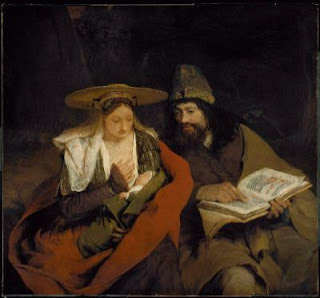
As we get ready to pack our suitcases and print our boarding passes, it's time to wind up the week in food. Thanks to the recommendations of our concierge and a fantastic book on Boston's restaurants that Kathy got me at the Green Valley Book Fair, we have eaten well. Here are some highlights:
Sasso: Upscale, attentive service, and a fantastic table by the window, whereby we watched Boston walk past. The seared scallops I had were particularly wonderful, as were the crab cakes I had as an appetizer. We'd go back.
Legal Sea Foods: Yes, it's a chain, but it's a family-owned chain, and they do have a commitment to the freshest and healthiest seafood possible. It was fabulous. I had salmon, but the real winner was Hank's lobster. (We can't come to Boston and NOT have lobster, can we?) My only problem here was very inattentive service. We'd go back, but we'd pray for a different waiter.
Fiore: By Italians for Italians in the North End. Fantastic antipasti (with the exception of the pickled eggplant. I think Hank liked it.) Great pasta and original sauces, plus, we ate in the courtyard, watching the panoply of humans and listening to the Italian family next to us. The staff was wonderfully friendly, too.
We also had some great lunch and snack experiences that are worth a note.
Finagle a Bagle. This one came from Kathy's book, and they're right, it's a delicious bagel topped with any one of a number of delicious things (I had lox once and regular cream cheese. Hank had sausage, egg, and cheese on a jalapeno-cheddar bagel. It can get complicated.) I just like to say "Finagle a Bagle."
Au Bon Pain: This was so handy for us that we had lunch here twice. I LOVE their soups and bread. Yesterday's lunch was particularly nice, because it was cool and rainy, and the soup really hit the spot.
Uno: The spinach-broccoli pizza was great, and the wildberry sangria wasn't bad, either.
P.F. Chang's: Fried green beans. That's all I'm gonna say.
The Boston Museum of Fine Art Cafe: Boston Clam Chowder is a specialty, and I had some, and it was great. Clam chowder is easy to get wrong. If the clams are tough, or the potato-onion balance is off, then it is pretty horrible all the way around. This was perfectly balanced, and, like lobster, you have to have some while you're here. (We also had Boston cream pie at Legal Sea Foods.)





